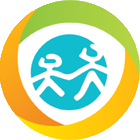CWDS Glossary
The CWDS Glossary includes a List of Acronyms and defined terms captured from various models, reports, and other artifacts pertaining to the Child Welfare System – California Automated Response and Engagement System (CWS-CARES) Project. The Glossary standardizes terms used across the various project disciplines; each term is defined with its meaning specific to the project domain.
The State may update the CWDS Glossary at any time. Any questions please contact CWDS Communications.
A B C D E F G H I J K L M N O P Q R S T U V W X Y Z
Behavior Driven Development (BDD)
A branch of Test Driven Development (TDD). BDD uses human-readable descriptions of software user requirements as the basis for software tests. Like Domain Driven Design (DDD), an early step in BDD is the definition of a shared vocabulary between stakeholders, domain experts, and engineers. This process involves the definition of entities, events, and outputs that the users care about, and giving them names that everybody can agree on.
Benefits
Financial assistance or payment programs which require certain elements of eligibility to acquire and maintain the payments.
Best Practice
Best practice in child welfare, refers to evidence-based child welfare practice which involves identifying, assessing, and implementing strategies that are supported by scientific research as being effective in improving outcomes for children and families.
Big Bang
Big Bang is NOT to be used: ‘Statewide Rollout’ or ‘Entire State at Once’ will be used instead.
Binary Large Object (BLOB)
A collection of binary data stored as a single entity in a database management system. Also known as basic large object, Binary blob or BLOB. Refer also to unstructured data.
Binti (BINTI)
A mission driven technology company based in Oakland California. They are specifically known for their software that tracks the Resource Family Approval process. This software is currently being utilized by multiple counties in the State of California.
Bisexual
A person emotionally, romantically or sexually attracted to more than one gender though not necessarily simultaneously, in the same way or to the same degree.
Blueprint
An artifact that documents all of the program and practice requirements organized by process areas (e.g., Screening), which contain multiple business workflows in the form of Building Blocks (e.g., Gather Person and Allegation Information).
Board of Directors (BOD)
The highest authority level of the Project’s governance structure is the Board of Directors (BOD), which is a coalition of executives from CDSS, OSI, and the CWDA. The BOD is primarily responsible for setting the vision and goals for the overall Child Welfare System and ensuring that the Project has adequate funding to complete its goals and objectives.
While the Project’s ELT is responsible for ensuring that the new CWS-CARES meets state and federal requirements within the established scope, schedule and budget, the BOD retains ownership and responsibility. Significant changes2 to the project scope, schedule and budget must be reviewed and approved by the BOD.
The CWDS BOD consists of:
- CDSS Director, who serves as the BOD Chair
- CDSS Chief Deputy Director
- CDSS Chief Operating Officer
- CWDA Executive Director
- OSI Director
- OSI Chief Deputy Director
Budget Change Proposal (BCP)
A Budget Change Proposal (BCP) is a formal document that is required when a state office has a need for additional resources or a reduction in resources to change the level of service or funding for activities authorized by the Legislature, or to propose new program activities not currently authorized.
